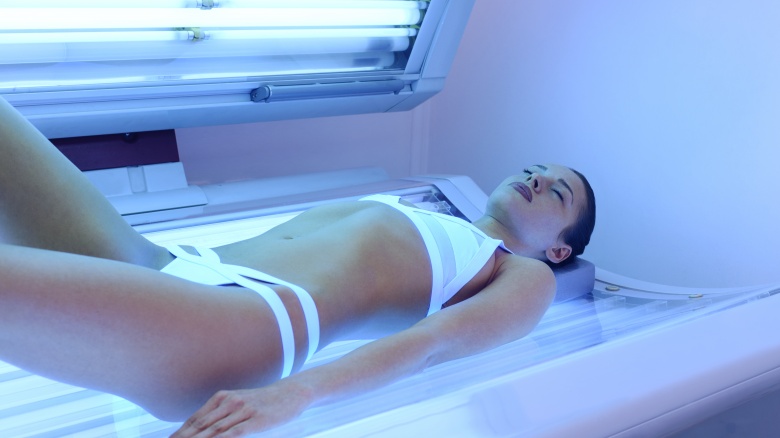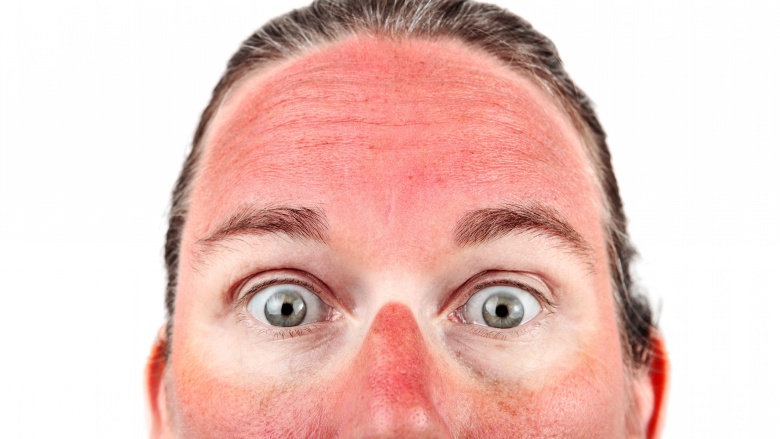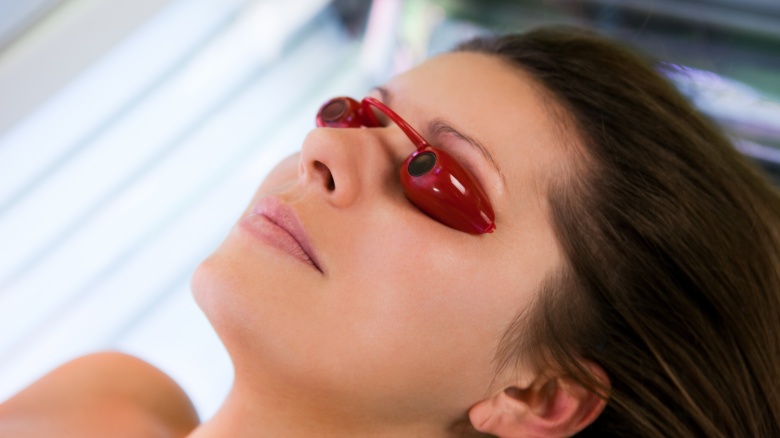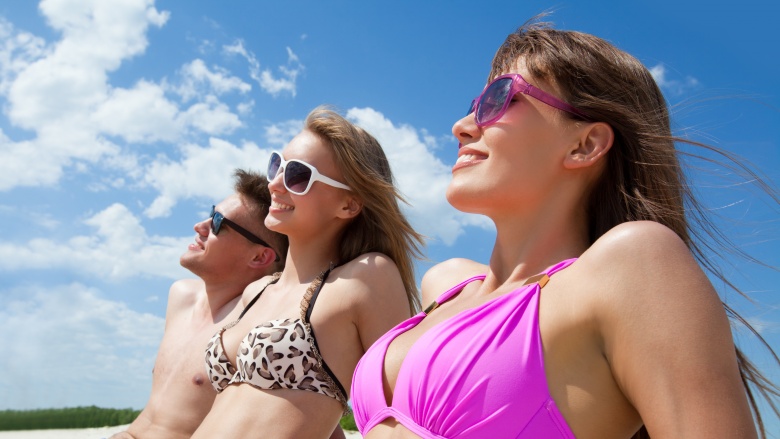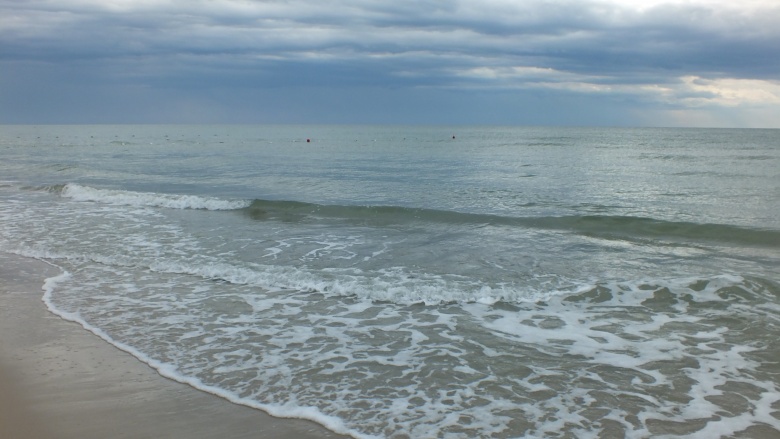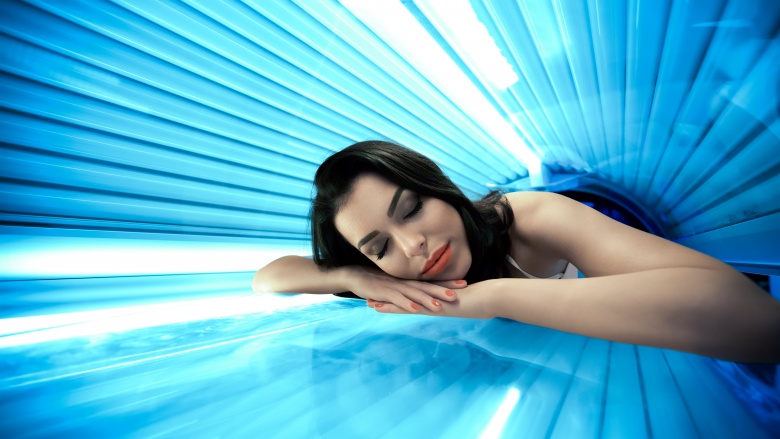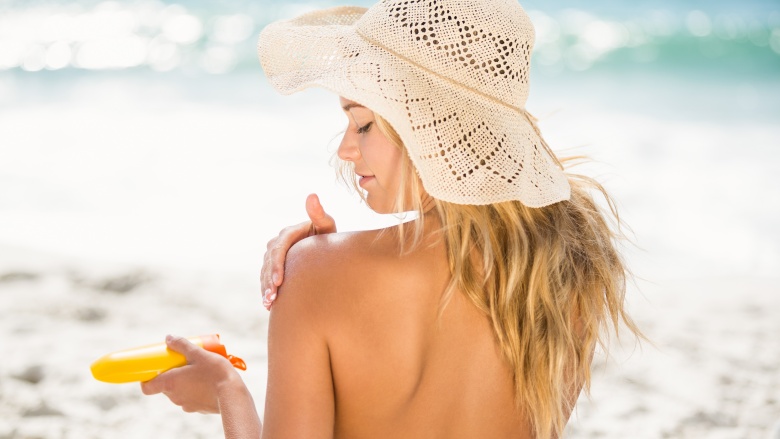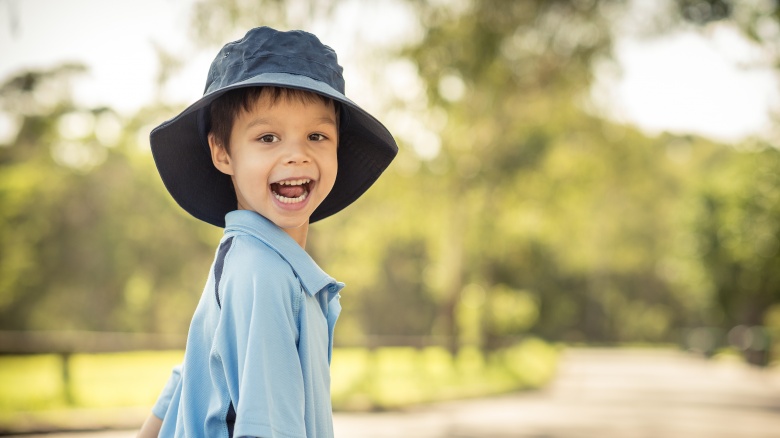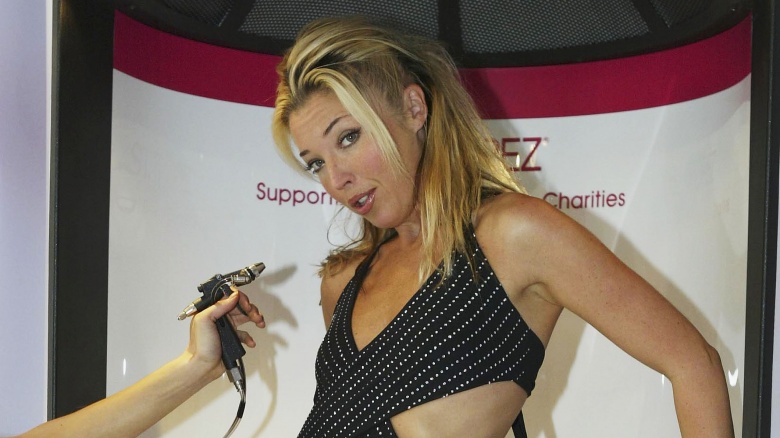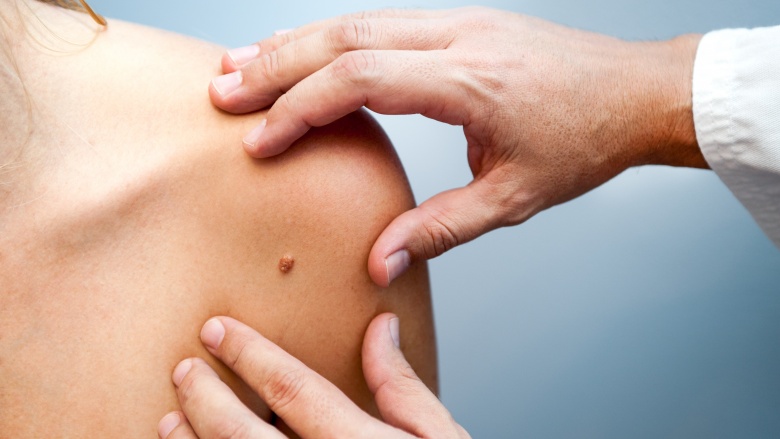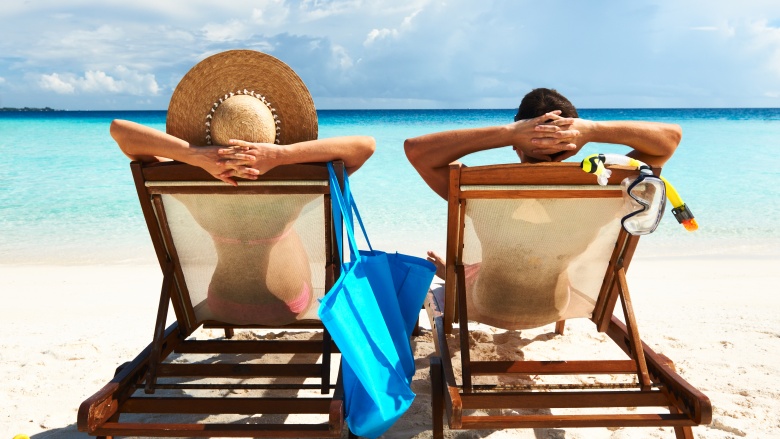The Truth About Tanning And Skin Cancer
Admit it, having that "summer glow" that comes from a suntan makes you feel beautiful, healthy and pretty darn good about yourself. And today, with modern tanning beds, it's possible to keep that glow going all year round. Most of us are aware of the dangers of tanning, but new studies indicate it's even more important to stop, whether it be naturally from the sun, or from a tanning bed.
In the US, 35 percent of adults and 55 percent of college students have tanned in a tanning bed, according to a study published in The Journal of the American Medical Association (JAMA). Unfortunately, tanning can lead to tons of problems down the road — none of them any fun. Scientists are now saying tanning in any way, shape or form is to be avoided at all costs. Keep reading to find out why.
Everyone is at risk
According to a study released by JAMA Dermatology, over 400,000 cases of skin cancer can be attributed to indoor tanning in the US alone. They also found that, surprisingly, tanning can be more deadly than smoking. According to the study, the number of skin cancer cases due to tanning is higher than the number of lung cancer cases attributed to smoking. In fact, one in five people who regularly tan in tanning beds develop cancer later, according to the American Society for Dermatologic Surgery.
A popular misconception is that only fair-skinned people need to be concerned about tanning beds or overexposure to the sun.. While darker skin does have more protective melanin pigment, skin cancers and premature aging do occur within this group. Unfortunately, cancer in darker-skinned individuals is more likely to be detected at a later, more dangerous stage.
Even one sunburn doubles your chances for developing skin cancer
Research indicates just one sunburn doubles your chances of developing melanoma later in life.
According to WHO, UV radiation "induces degenerative changes in cells of the skin, fibrous tissue, and blood vessels, leading to premature skin aging," among other dangers. UV radiation can also weaken the immune system, the organization adds.
Tanning can lead to serious damage for your eyes
UV exposure is very dangerous for your eyesight. According to the American Academy of Ophthalmology (AAO), "too much exposure to UV light raises the risks of eye diseases, including cataracts, growths on the eye and cancer." Some 12 to 15 million people worldwide become blind from cataracts annually, of which up to 20 percent may be caused or enhanced by sun exposure. Studies indicate tanning beds produce UV levels that are up to 100 times stronger than the sun's UV rays, which can cause serious damage to your eyes.
"UV damage to the eyes may result in the development of cataracts . . . as well as cancer of the uvea, which is the middle layer of tissue under the white of the eye," Philip R. Rizzuto, MD, an ophthalmologist and associate clinical professor of surgery at the Warren Alpert Medical School of Brown University in Providence, Rhode Island, told AAO. "UV damage is cumulative. That's why teens and young adults should be particularly careful to protect their eyes from sun exposure."
While outdoors, ophthalmologists recommend you wear 99 percent and higher UV-absorbent sunglasses and a brimmed hat to protect your eyes.
The young aren't immune
Teens are using tanning beds at an alarming rate. An estimated 71 percent of tanning salon patrons are girls and women aged 16-29. With this new trend come horrible stories of young women in their 20s developing skin cancer. On their website, the Skin Cancer Foundation highlights several stories of young women who thought tanning was safe but developed skin cancer at a very young age.
One of those stories come from a 23-year-old woman named Natalie, who said she began tanning regularly after she moved from Florida to Boston. She said she used a tanning bed for the first time when she was 16, and was tanning once every two weeks by the time she was a freshman in college. By her sophomore year, Natalie said she usually tanned 12-15 minutes at least once a week. When she went home to Florida in the summers, she regularly "laid out" in the sun with no sunscreen.
"I tanned because I felt like it made me look prettier and skinner," she said. "My grandmother begged me not to tan because she was scared I'd get skin cancer. I was like, 'No, it's not going to happen to me.'" Natalie developed in situ melanoma, which means it is 100 percent curable. After surgery, Natalie was declared healthy but she is well aware that after her exposure to UVB rays in the tanning beds, the risk of developing a more dangerous form of melanoma looms in her future.
"Melanoma robbed me of my youth — I was a carefree college student and basically thought I was invincible," Natalie said. "In fact, I joked about it once, saying that I might get skin cancer someday, but as long as I was pretty and tan for the moment, it was okay. How stupid and naive of me to say or even think such a thing. My scars now make me look like some Frankenstein. Tanning isn't worth it."
Don't be fooled by cloudy days
Many people believe cloudy days decrease the risk of getting a sunburn, so they are less vigilant about putting on sunscreen or wearing a hat and sunglasses, but doctors warn some of the worst sunburns can occur on cloudy days. Even through cloud coverage, UV rays reach the Earth's surface and your skin.
Some studies, including one published in the Journal of Geophysical Research, describe an effect called "cloud enhancement of UV radiation." According to the study, the sun's beams reflect off the sides of clouds, which causes radiation to be more focused and dangerous for people on the surface of the Earth.
"Don't be fooled by an overcast day or a cool breeze!" says the World Health Organization. "Even a long stay in open shade, for example between buildings, may give a sensitive person a sunburn on a day with high UV levels."
The winter months are still dangerous
Even though the sun doesn't seem as strong in the winter months, it's just as important to protect yourself — harmful UVB rays are present year-around.
"If you're outside, any uncovered areas of your body are exposed to UV rays," Susan Chon, M.D., associate professor in the Department of Dermatology at MD Anderson, said in an interview. Though cooler temps can be deceiving, if you're outside, you're still at risk for skin damage. In fact, people enjoying the great outdoors and the snow in the winter to be extra vigilant, since snow reflects light.
Forget misleading info about vitamin D
Your body produces vitamin D when your bare skin is exposed to sunlight, especially UVB rays. That doesn't mean tanning will up you body's production. Research indicates the majority of tanning bulbs actually emit UVA radiation and not the needed UVB radiation.
"No ... no... no!," Deborah S. Sarnoff, M.D., a clinical professor of dermatology at NYU School of Medicine, told the Skin Cancer Foundation. "A tanning bed will never provide you with the vitamin D that you need, nor is it safer than tanning outdoors. Not understanding the facts can literally mean the difference between life and death. Both ultraviolet A (UVA) and ultraviolet B (UVB) radiation cause cell damage that can lead to skin cancer. When you lie in an indoor tanning bed, you are exposed primarily to UVA... But it is UVB (the sun burning rays) — not UVA — which helps the skin make vitamin D, so you are increasing your risk of skin cancer without receiving any benefit!"
A safer way to get your needed vitamin D is to be exposed to a very limited amount of sunlight, eat a healthy diet or from a vitamin supplement.
Always opt for protection
The Skin Cancer Foundation recommends everyone limit outdoor time to between the hours of 10 a.m. and 4 p.m., wears protective clothing, seeks shade when outdoors, and uses a broad spectrum sunscreen. That recommendation becomes more relevant as climate change makes the sun more powerful and deadly. One study says ozone depletion, which allows more UV rays to reach the surface of the Earth, has led to an increase in skin cancers worldwide, and scientists fear this trend will increase as time goes by.
It's even more important that kids cover up, since children receive the majority of their lifetime sun exposure before age 18.
"Taking the right precautions can greatly reduce your child's chance of developing skin cancer," the Skin Cancer Foundation says.
Take a lesson from the Aussies
In Australia, where ozone depletion is most prevalent, increases in UVB radiation has increased by 5 percent since 1980. Since then, the number of cases of skin cancer has exploded. Nearly two-thirds of all Australians will have been diagnosed with some form of skin cancer by the time they are 70, and that figure is expected to rise. Australians are so aware of the dangers of the sun that they have implemented a strict "no hat, no play" policy at schools and daycares, which means children are forbidden from going outdoors without a wide-brimmed hat on their little heads.
What about a spray tan?
Many people hoping to get that "summer glow" opt for getting a spray tan to protect themselves from the dangers of tanning beds or the sun. Unfortunately, this option may not be as safe as might be expected.
When ABC News, investigated spray tans, six medical experts in areas ranging across the fields of dermatology, toxicology and pulmonary medicine said they "have concerns" about the practice. Their concerns surround dihydroxyacetone (DHA), the chemical that produces the tan. The danger, they say, comes when patrons inhale the chemical while getting sprayed.
According to the Mayo Clinic, the FDA has approved DHA for external application to the skin, but also says it shouldn't be applied to the lips, nose or around the eyes — and it shouldn't be inhaled. If you do choose to get a spray tan, ask the salon how they protect you from inhaling the chemical or getting it in your eyes or mouth. They also recommend wearing goggles, nose plugs and lip balm during your spray tan.
If you've tanned, have frequent medical checkups
Using tanning beds before the age of 30 increases your risk of developing melanoma by 75 percent, meaning it's even more important to get regular skin checks if you've tanned in the past.
According to WebMD, you should call your doctor if you have an irritated or irregular skin growth. This may include a mole or area of normal skin that has changed color, shape or appearance; a smooth bump that may look like a mole or cyst; a mole or bump that itches, bleeds, crusts over, and has not healed in three weeks; or a firm, pearly bump with tiny blood vessels that look spidery.
Enjoy the sun, just protect yourself
The consensus among scientists is to be careful and use protection when enjoying the outdoors. As for tanning beds, scientists and medical doctors agree the healthy glow that lasts just a few days is just not worth the damage that can be incurred from the UV rays your body absorbs in a tanning bed.


